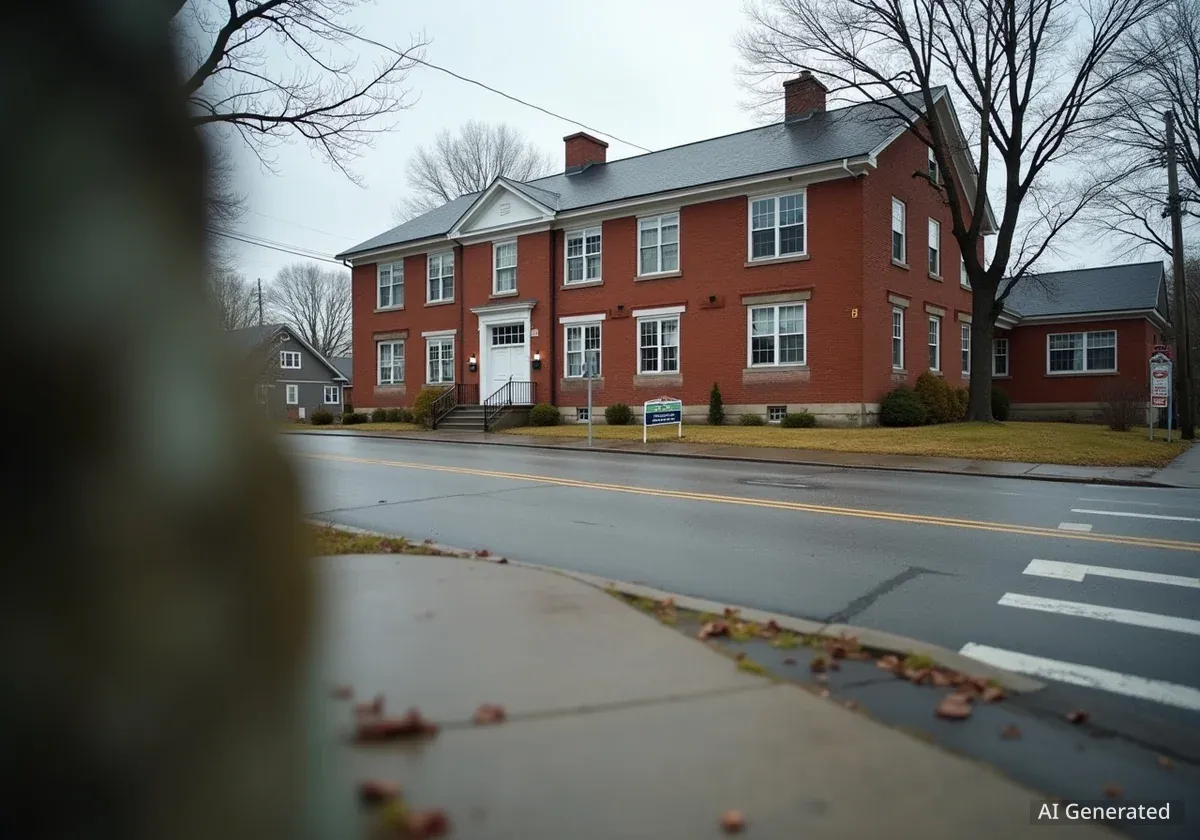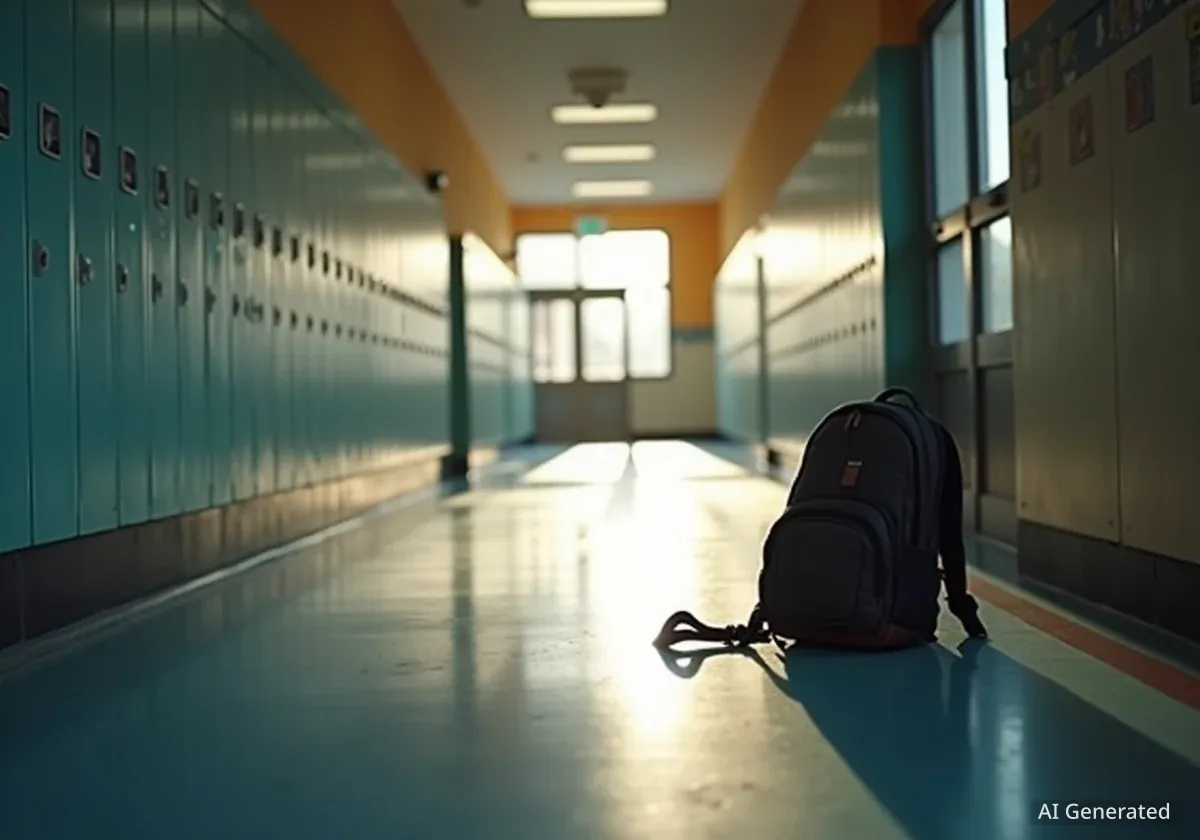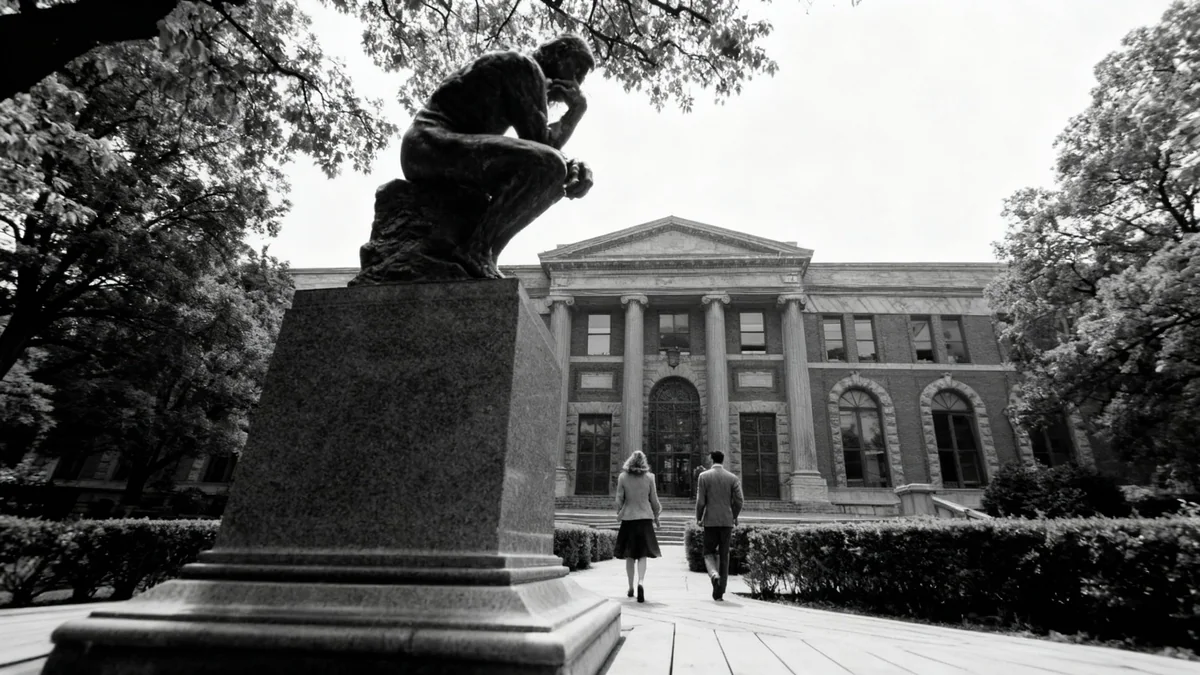Residents of Danville, Vermont, are scheduled to vote in December on a contentious proposal to close the high school grades at the local K-12 school. The move, prompted by a citizen petition, would shift the district to a tuition-based model for its older students, igniting a fierce debate over the future of public education and support for students with disabilities in the region.
The Danville School Board has proposed a special meeting on December 6 for the vote. If the measure passes, grades 9 through 12 would be eliminated by June 30, 2026. The school district would then be responsible for paying tuition for its high school students to attend other public or designated independent schools.
Key Takeaways
- Danville residents will vote on closing grades 9-12 at the Danville School, a K-12 institution with approximately 70 high school students.
- The vote was triggered by a citizen petition, fueled by uncertainty surrounding Vermont's new education reform law, Act 73.
- Opponents argue the closure would create a "public high school desert" and disproportionately harm students with disabilities who may not be served by nearby private academies.
- Data shows Danville School serves a higher percentage of students with IEPs and from low-income families compared to the nearby St. Johnsbury Academy.
- A state senator's involvement has raised questions about potential conflicts of interest and the spread of information regarding future legislative changes.
Uncertainty Spurs Closure Debate
The push to close Danville's high school is deeply connected to statewide changes in education policy. Vermont's Act 73, a comprehensive reform law passed in July, aims to consolidate the state's 119 school districts and alter education funding. A key provision that worries small communities is a new requirement for minimum average high school class sizes of at least 18 students.
Danville School, with about 70 students spread across four high school grades, falls short of this target. The school board, in a letter to the state's redistricting task force, stated that the petition is a "direct result of great uncertainty due to Act 73."
Clayton Cargill, the Danville district board chair, noted that the board has been exploring options to preemptively address the changes. An initial financial analysis presented in September suggested that paying tuition for high schoolers could result in a lower tax rate for residents. However, Cargill and others have since questioned its accuracy, pointing out it may not account for all potential costs.
Danville School at a Glance
- Total Enrollment: Approximately 344 students (K-12)
- High School Enrollment: Roughly 70 students (Grades 9-12)
- Supervisory Union: Part of Caledonia Central, along with Cabot and Twinfield school districts, which also operate small K-12 schools.
Financial and Logistical Hurdles
Critics of the closure proposal highlight significant unaddressed expenses. Natalie Conway, the principal of Danville School, outlined several concerns in a letter to the board. She noted that the nearest public high schools, Hazen Union and Lake Region Union, are each more than a 30-minute drive away.
"Imagine the costs associated with this transportation for general and special education students," Conway wrote. She also raised concerns that the difficulty of attending a distant school could lead to higher dropout rates among students who already struggle with attendance.
A Lifeline for Vulnerable Students
At the heart of the opposition is the belief that closing Danville High School would leave the area's most vulnerable students without adequate support. Faculty and administrators describe the school as a crucial resource for students with disabilities and those who have not succeeded in larger academic environments.
"Students from all walks of life and all abilities who need a second chance, a smaller school, or more individual attention and support find a home in Danville School," Principal Conway stated. "Students with disabilities find a home at Danville School."
If the high school closes, students would likely attend St. Johnsbury Academy or Lyndon Institute, two nearby private schools designated as independent schools eligible to receive public tuition dollars. While state rules require these schools to serve students with special education needs, Danville educators fear the reality would be different.
David Warren, a social studies teacher at Danville, expressed this concern directly. "They don’t have to take your kids," he said, referring to the private academies. "And how do I know? Because we’ve been giving kids from those schools here in Danville a second chance."
Comparing Student Populations
Data from the Vermont Agency of Education for the 2023-24 school year highlights the demographic differences between the schools:
- Danville School: 22% of students have Individualized Education Plans (IEPs), and 49% are eligible for free or reduced-price lunch.
- St. Johnsbury Academy: 8.7% of students have IEPs, and just over 14% are eligible for free or reduced-price lunch.
- Lyndon Institute: 19.5% of students have IEPs, and nearly 22% are eligible for free or reduced-price lunch.
Private Schools Respond to Concerns
Officials at St. Johnsbury Academy dispute the claim that they underserve students with disabilities. Academy Headmaster Sharon Howell called the assertion "patently false." She argued that the school's lower percentage of students on IEPs is a sign of success, not failure.
According to Howell, the academy's philosophy is to transition students from IEPs to 504 plans or other internal support systems whenever possible, allowing them to integrate into general education classes. Data provided by the academy indicates that about 24% of its publicly funded students are on an IEP, 504 plan, or another support plan.
Similarly, Brian Bloomfield, the head of school at Lyndon Institute, said claims that his school enrolls fewer students with IEPs were "factually inaccurate," stating that over a quarter of the student body has an active IEP.
Political Influence and Community Division
The debate in Danville has been further complicated by the involvement of State Senator Scott Beck, a Republican who also works at St. Johnsbury Academy. According to school board chairs in Danville and nearby Cabot, Beck warned them that future legislative action might remove the option for towns to pay tuition to private schools after a public school closure.
This warning appears to have motivated the petition, which was organized by Peter Mantius, another faculty member at St. Johnsbury Academy. Mantius said he hoped residents would be "fully informed" for what he called "the most important decision this town is going to make in a generation."
However, Beck's role has drawn criticism. At a recent board meeting, some community members accused him of spreading false information and acting out of a conflict of interest. Board Chair Clayton Cargill admitted he felt misled by the senator's advice. "I paraded this information around town... and I feel lied to in the situation," Cargill said.
Beck defended his actions, stating he was simply offering his opinion to constituents and that he does not believe districts have "forever to have this conversation." He denied misleading anyone.
As the December vote approaches, the Danville community faces a difficult choice with long-term consequences. The school board, in its letter to the state, summarized the gravity of the situation. "We are at risk of making a very reactionary decision that will change this town considerably in unforeseen ways," the letter stated. "We are forced to assume and plan for the worst case scenario."





